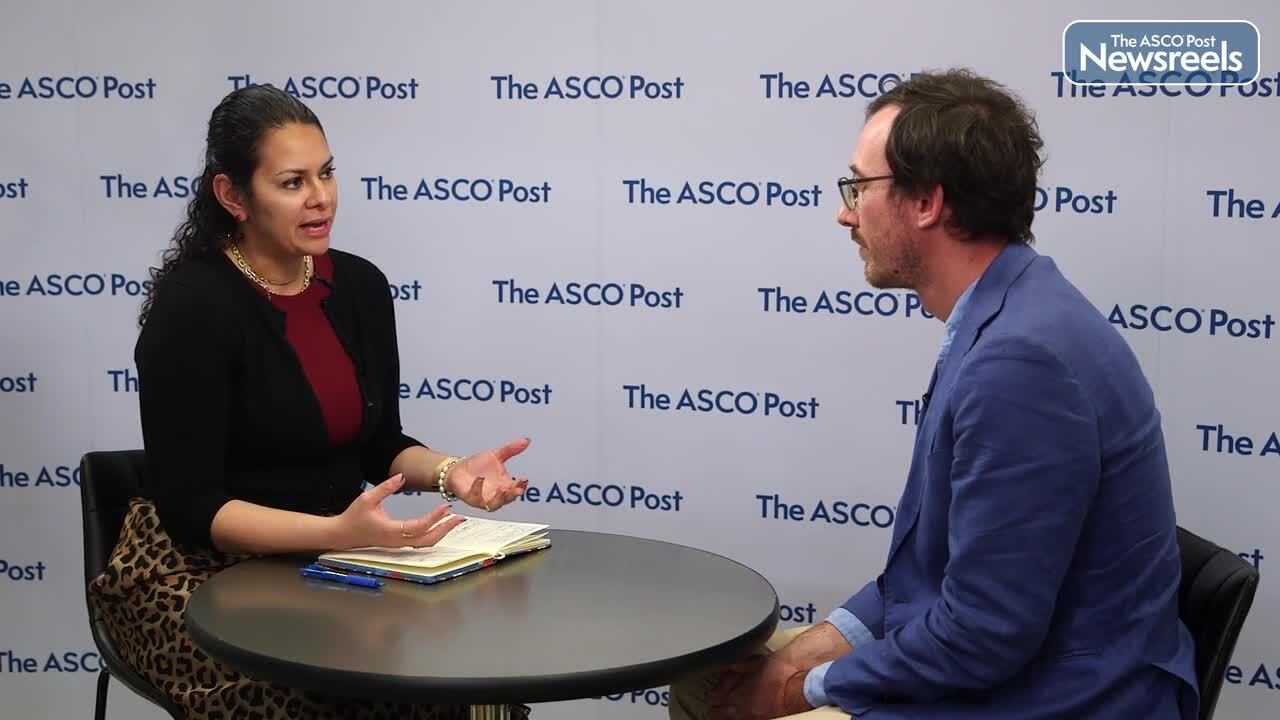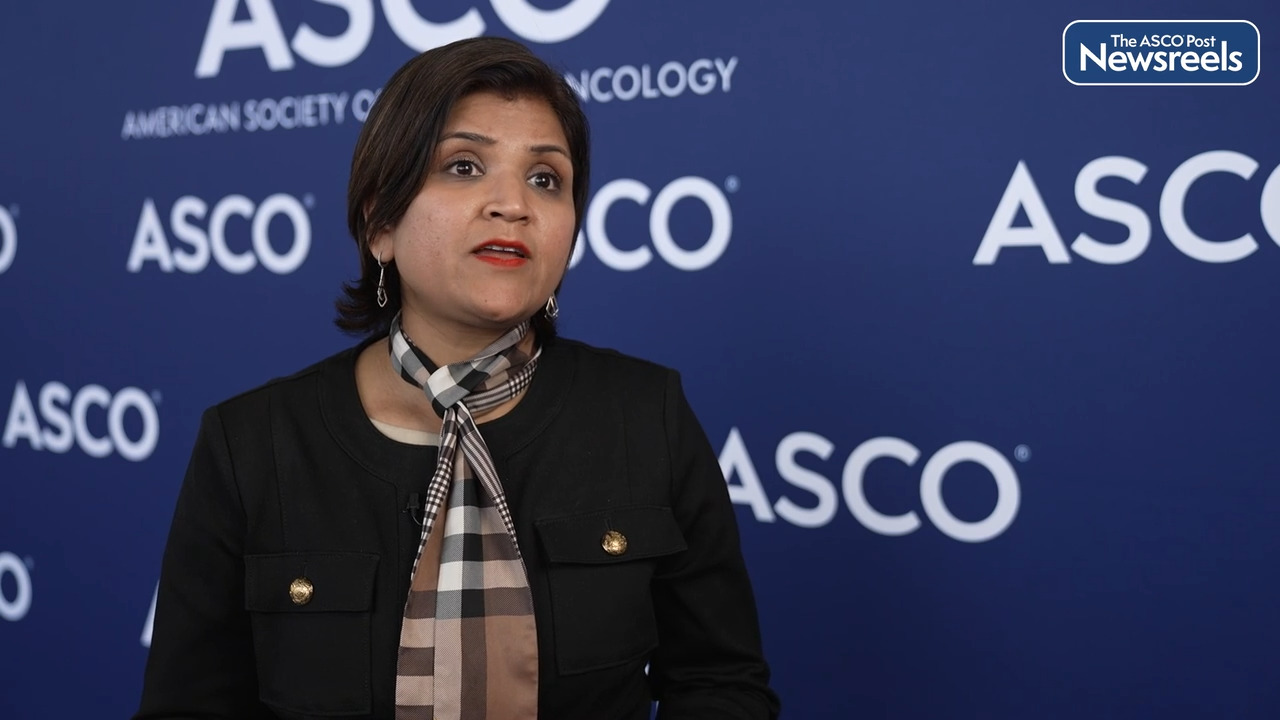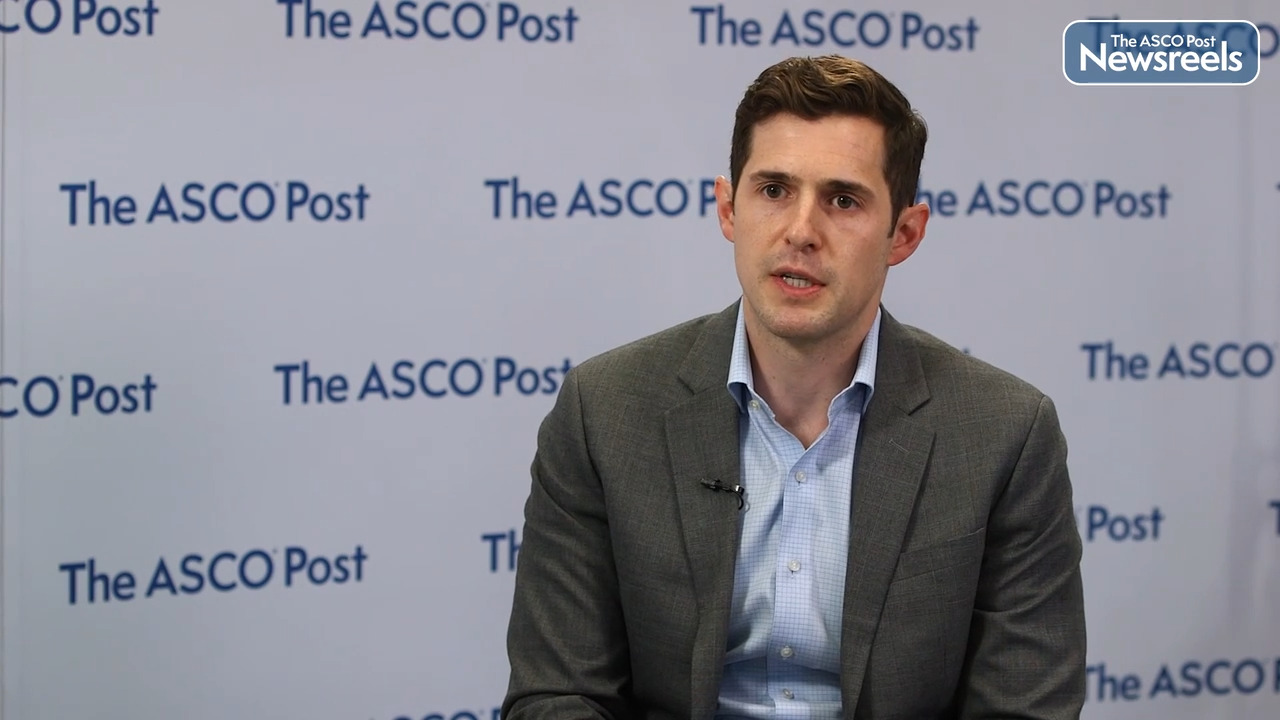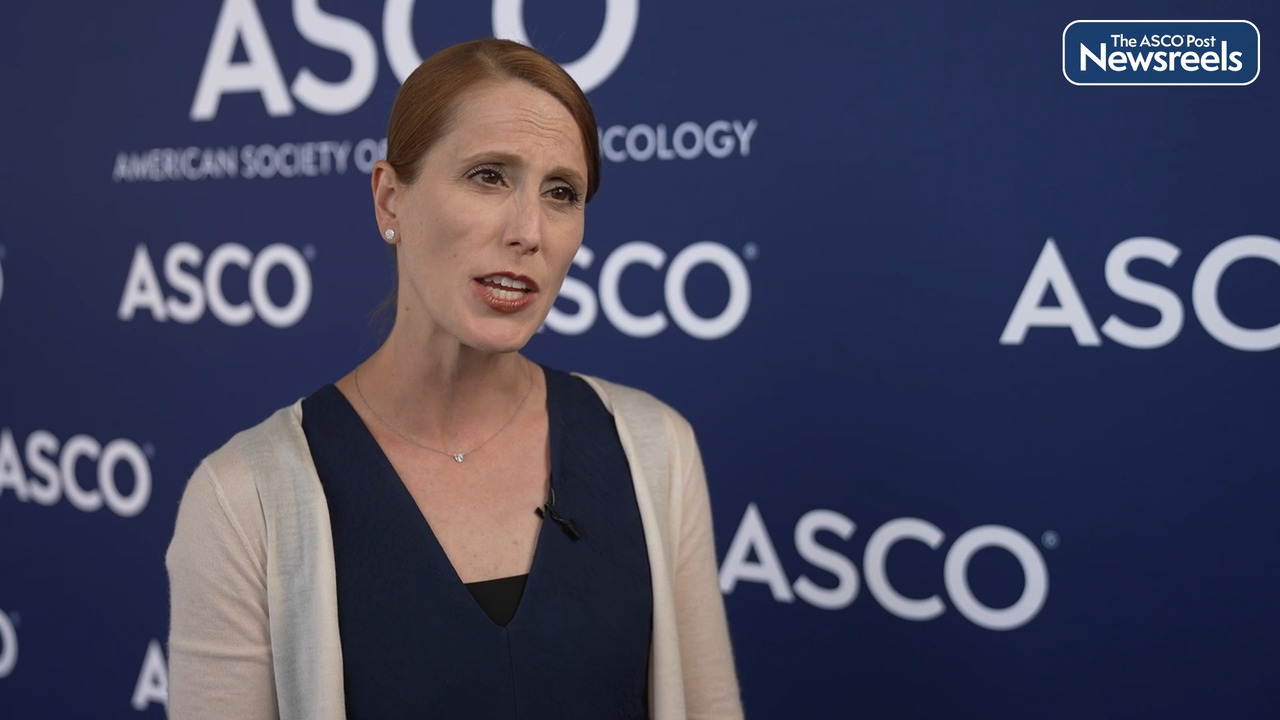Transcript
Disclaimer: This video transcript has not been proofread or edited and may contain errors.
Nirav N. Shah:
So mantle cell lymphoma is a disease that sort of is felt to be a relapsing remitting disease, which means that most patients are going to relapse in their lifetime. Now, while we have very, very good therapies for relapse mantle cell, which generally include covalent BTK inhibitors. For those patients who progress after covalent BTK inhibitors, options are limited. We have treatments like CAR T-cell therapy, but not all patients are healthy enough, fit enough, or are in an area where CAR T-cell therapy is accessible. So pirtobrutinib was studied as part of the BRUIN trial to look specifically at patients with B-cell malignancies. And the data being reported is looking at the cohort of patients with mantle cell lymphoma who received this drug in a relapsed refractory setting. Unlike other BTK inhibitors pirtobrutinib is a non-covalent reversible inhibitor showing that it has a different mechanism of action than the BTK inhibitors that are currently being used in the second line setting.
As part of the BRUIN study, whether or not you had prior BTK exposure was not an exclusion, and so actually the majority of patients who received pirtobrutinib, 90 of them, actually had prior BTK exposure, which is an unmet need in mantle cell lymphoma. Despite seeing a different BTK inhibitor, first, the overall response rate with pirtobrutinib was 58% in this heavily pretreated group, which is really just exciting to have another oral agent be effective in that patient population. Not only was it effective, but there were also durable responses. And so now in this sort of two year long term follow-up, we know that the median duration of response for those patients who were responding to therapy was 18 months, and the median overall survival was nearly 2 years.
This data actually led to this drug now being FDA approved and in this clinical setting and available, and part of that is because the safety profile that's demonstrated in the BRUIN study in this patient population was actually quite favorable. The toxicities were low and the traditional BTK toxicities, things like atrial fibrillation, hypertension, and bleeding were actually seen at very low rates, such that may occur actually in a general patient population.
In conclusion, I think that pirtobrutinib represents a novel mechanism of action in inhibiting the BTK pathway and allowing patients that have failed other covalent BTK inhibitors to continue receiving an oral medication that has now shown incredible efficacy, safety, and durability.





